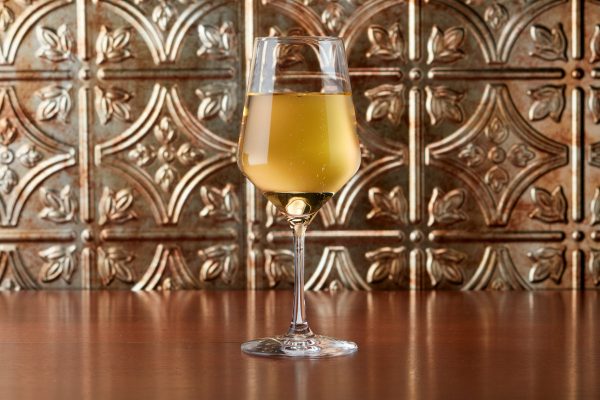
The following beer recipe is featured in the November/December 2019 issue of Zymurgy magazine. Access this issue along with the archives with Zymurgy Online!
Recipe courtesy Scott Aufderheide
Session-style meads are notoriously difficult because they often taste weak and watery. Blueberries are a great fruit for this style because they have good natural tannins and some acidity. If you taste this after it ferments to completion but before you back-sweeten, you might be surprised by the lack of blueberry flavor. That’s because some sugar needs to be present for the blueberry flavor to properly assert itself and be recognized.
You may think 20 lb. of blueberries is a lot, but 3 lb. per gallon is actually the standard. I went with 4 lb. per gallon for added flavor and presence. The measured original gravity may be much lower than the true original gravity since the sugar in the berries takes time to release.
A 6.5% ABV mead might not seem very sessionable. But again, because it’s hard to get good flavor in a session mead, enough honey needs to be added to make a good impression. Oak adds structure and flavor and rounds out the edges quickly after fermentation.
Back-sweetening gives general body and added flavor. The target sweetness of 1.015 is a good medium point—it isn’t overly sweet thanks to the balancing effects of berry and oak tannins and carbonation. All the components of this recipe have been targeted and used to make a nicely balanced and flavorful session mead that’s hard to put down (hence “vice” in the name). Make tweaks at your own risk, or at least consider their effect on balance.
Pectic enzyme and bentonite cannot be added together because bentonite denatures the enzyme, so wait a day between additions. Bentonite in primary is easily kept in suspension by the turbulence of fermentation, making it very effective. The combination yields a very clear mead almost immediately after fermentation ends. Fermaid O and GoFerm ensure a good, healthy fermentation with all the proper nutrients for the yeast. Sorbate and metabisulfite are stabilizers and an antioxidant to make sure fermentation doesn’t restart after back-sweetening.
The following beer recipe is featured in the November/December 2019 issue of Zymurgy magazine. Access this issue along with the archives with Zymurgy Online!
Recipe courtesy Scott Aufderheide
Session-style meads are notoriously difficult because they often taste weak and watery. Blueberries are a great fruit for this style because they have good natural tannins and some acidity. If you taste this after it ferments to completion but before you back-sweeten, you might be surprised by the lack of blueberry flavor. That’s because some sugar needs to be present for the blueberry flavor to properly assert itself and be recognized.
You may think 20 lb. of blueberries is a lot, but 3 lb. per gallon is actually the standard. I went with 4 lb. per gallon for added flavor and presence. The measured original gravity may be much lower than the true original gravity since the sugar in the berries takes time to release.
A 6.5% ABV mead might not seem very sessionable. But again, because it’s hard to get good flavor in a session mead, enough honey needs to be added to make a good impression. Oak adds structure and flavor and rounds out the edges quickly after fermentation.
Back-sweetening gives general body and added flavor. The target sweetness of 1.015 is a good medium point—it isn’t overly sweet thanks to the balancing effects of berry and oak tannins and carbonation. All the components of this recipe have been targeted and used to make a nicely balanced and flavorful session mead that’s hard to put down (hence “vice” in the name). Make tweaks at your own risk, or at least consider their effect on balance.
Pectic enzyme and bentonite cannot be added together because bentonite denatures the enzyme, so wait a day between additions. Bentonite in primary is easily kept in suspension by the turbulence of fermentation, making it very effective. The combination yields a very clear mead almost immediately after fermentation ends. Fermaid O and GoFerm ensure a good, healthy fermentation with all the proper nutrients for the yeast. Sorbate and metabisulfite are stabilizers and an antioxidant to make sure fermentation doesn’t restart after back-sweetening.
Ready to brew? Unlock unmatched resources, validated recipes, and more benefits when you become an AHA member. Join Now
Ready to brew? Unlock unmatched resources, validated recipes, and more benefits when you become an AHA member.
Join for $4.99Already a member? Login here




